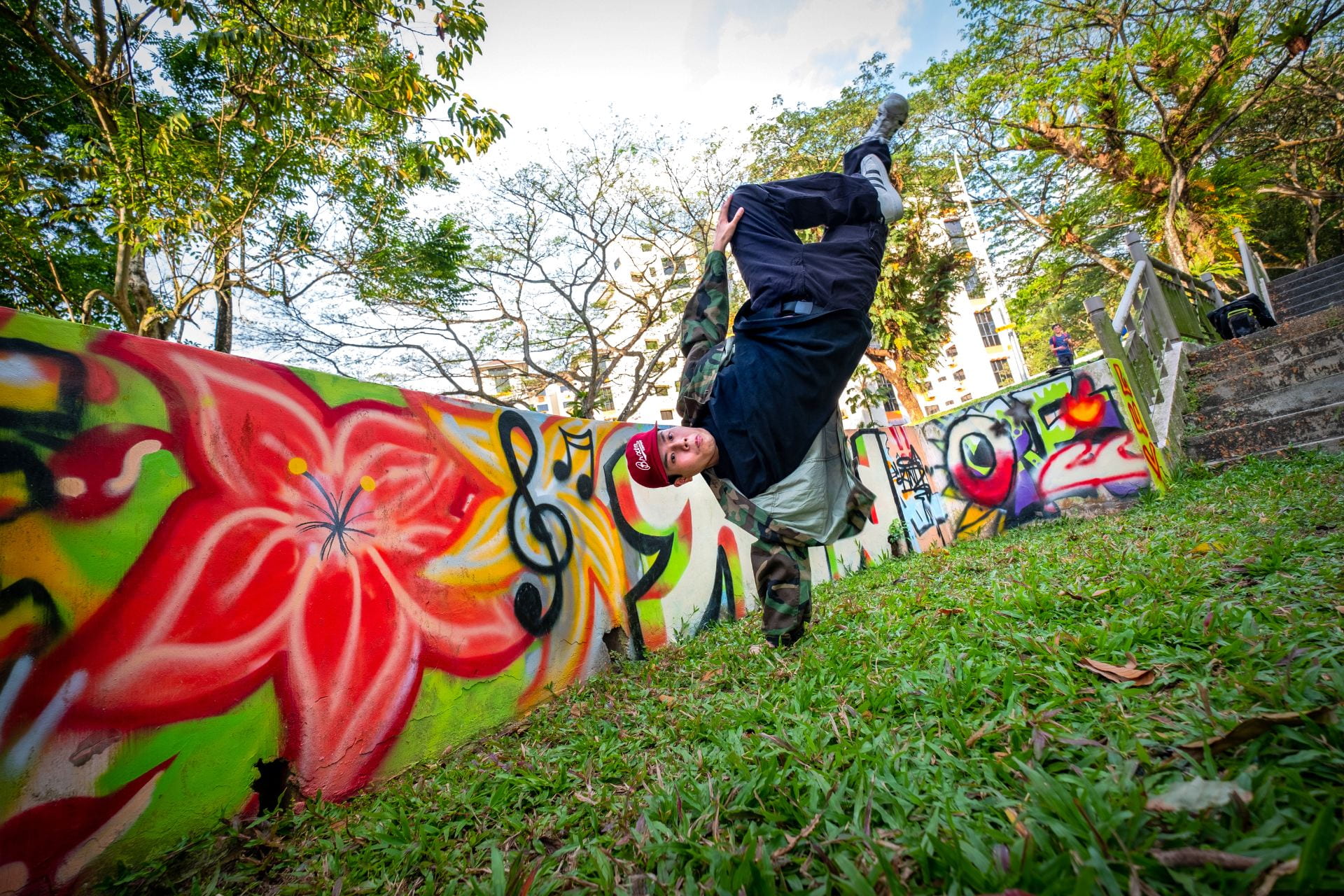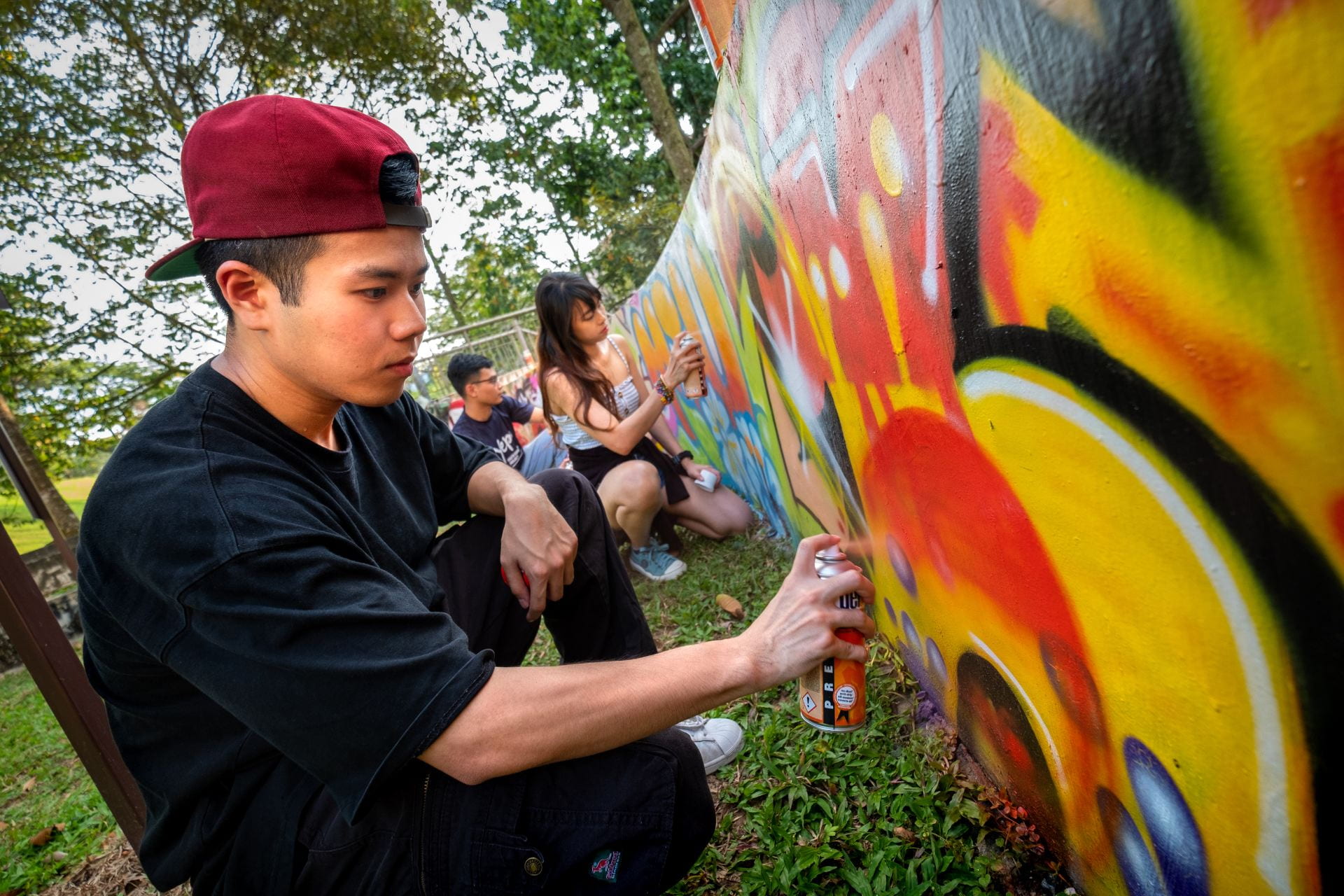Dr Phan Quang Gia Chuong, 27 – better known as GC – has been breakdancing and graffiti painting all his life. With breaking set to make its Olympic debut in Paris in 2024, what’s on the NTU researcher’s mind?
by Sean Shagaran
When and how did you pick up hip hop?
I was about 10 years old and had just started listening to rap music. Being young and curious, I decided to learn more about the culture, which eventually led to me picking up graffiti and dance, and staying out of trouble in the process because I was quite the rebel! Since then, hip hop has been a huge part of my life. I’ve also won awards at national breakdancing competitions.
While pursuing your PhD at NTU, you started programmes to teach breakdance and graffiti as a residential mentor at Hall 8. Are you still cultivating the next generation of breakdancers and street artists at NTU?
Firstly, we breakers refer to it as breaking. Breakdance is its commercial name and I think it’s my duty as a breaker to let the public know! Now that I’ve said that, the breaking and graffiti programmes were a great experience because I was doing what I believed in. I don’t think I’m an expert in either art form, but I was glad to be able to introduce hip hop culture to students with whatever knowledge I had.
I have less time for these pursuits now because of my research work.

With breaking set to make its Olympic debut at the Paris 2024 Games, there will be more interest in the sport. Are there any clubs or practice spots in NTU that students should know about to kick-start their dance careers?
Of course! With breaking becoming an Olympic sport, the dance form will be elevated, and more people will be willing to try it out. NTU has a vibrant dance scene. The breaking club, NTU Breakers, organises classes for beginners and open practice sessions. Due to COVID-19 restrictions, practices now follow a strict schedule and are held at specifically allocated spots. Join the club to find out where!
Chemistry and hip hop seem worlds apart. Has one ever influenced the way you approach the other despite them being unrelated?
They are different at the microscale but resemble each other at the macroscale. I believe that science is art and art is science. I can apply what I learn from one to the other. For example, to practise both science and hip hop, you must be meticulous, creative and always willing to learn through experimentation.

Now that you have thrown yourself headlong into research, what motivates you to continue practising both graffiti and breakdance?
I recently switched from graffiti to illustrative art, partly due to time and travel limitations. What motivates me to pursue my passions, apart from family and friends, is the culture that I have benefited so much from. Ever since I was an NTU undergrad, I have tried to paint hip hop and its practitioners in a better light. Many hip hop dancers I know are outstanding artists, educators and experts who actively contribute to society. I am always happy to introduce them to debunk a few stereotypes.
What’s your advice for budding young artists trying to balance their passions and university life?
I have struggled with the dilemma of dropping one to invest more time in the other. However, I also think it’s normal to feel exhausted having to be on your toes all the time with both work and interests. To counter this, I take short breaks whenever I need to. I also like to set short-term goals so I have something to look forward to and be excited about when there’s progress.
This story was published in the Jan-Mar 2021 issue of HEY!. To read it and other stories from this issue in print, click here.

